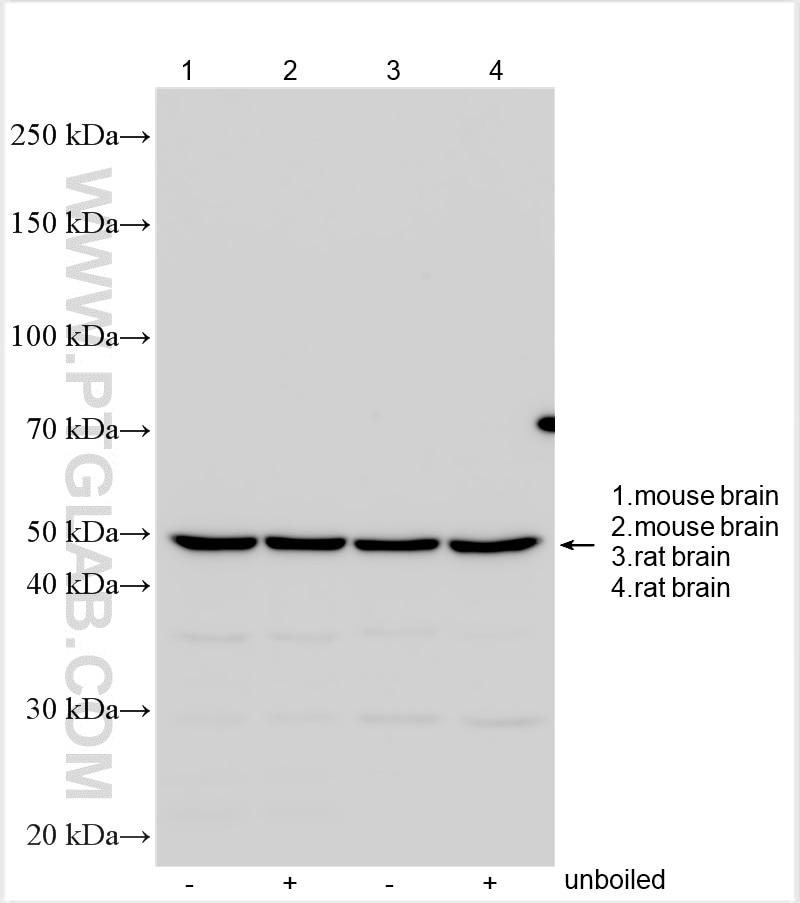Tested Applications
| Positive WB detected in | mouse brain tissue, rat brain tissue |
Recommended dilution
| Application | Dilution |
|---|---|
| Western Blot (WB) | WB : 1:500-1:3000 |
| It is recommended that this reagent should be titrated in each testing system to obtain optimal results. | |
| Sample-dependent, Check data in validation data gallery. | |
Product Information
32243-1-AP targets GPR183 in WB, ELISA applications and shows reactivity with human, mouse, rat samples.
| Tested Reactivity | human, mouse, rat |
| Host / Isotype | Rabbit / IgG |
| Class | Polyclonal |
| Type | Antibody |
| Immunogen | GPR183 fusion protein Ag36765 Predict reactive species |
| Full Name | G protein-coupled receptor 183 |
| Calculated Molecular Weight | 361 aa, 41 kDa |
| Observed Molecular Weight | 50 kDa |
| GenBank Accession Number | BC020752 |
| Gene Symbol | EBI2 |
| Gene ID (NCBI) | 1880 |
| Conjugate | Unconjugated |
| Form | Liquid |
| Purification Method | Antigen affinity Purification |
| UNIPROT ID | P32249 |
| Storage Buffer | PBS with 0.02% sodium azide and 50% glycerol , pH 7.3 |
| Storage Conditions | Store at -20°C. Stable for one year after shipment. Aliquoting is unnecessary for -20oC storage. 20ul sizes contain 0.1% BSA. |
Background Information
G-protein-coupled receptor 183, also known as Epstein-Barr virus-induced gene 2 (EBI2), was initially identified in B cells and is the most upregulated gene after infection with Epstein-Barr virus (PMID:37353188). GPR183 is known to play a key role in the development of antibody responses in secondary lymphoid organs (PMID:23473835).
Protocols
| Product Specific Protocols | |
|---|---|
| WB protocol for GPR183 antibody 32243-1-AP | Download protocol |
| Standard Protocols | |
|---|---|
| Click here to view our Standard Protocols |



